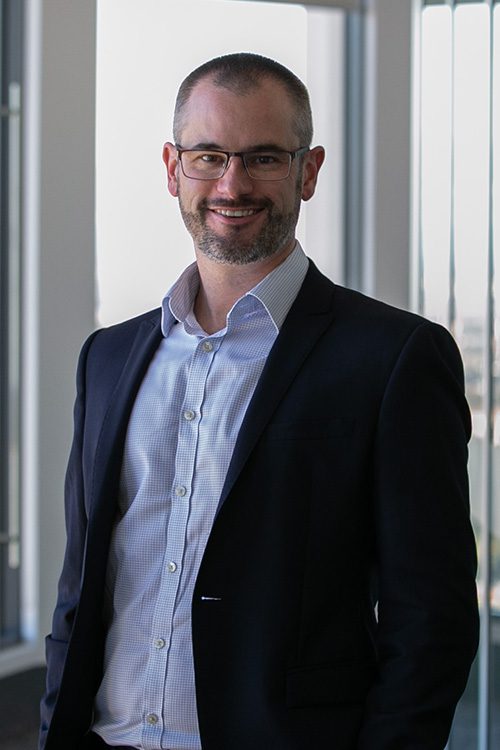One year on, as the dust settles from the shake-up of insolvency legislation in Australia, it’s clear that while changes make some headway into reshaping Australia to a restructuring-over-liquidation environment, the real work is yet to be done.
In theory, attempts to resolve issues with the insolvency paradigm are a step in the right direction. However, in practice it will take a fundamental shift in culture to see real change and a future in corporate restructuring.
The CFO is a critical medium for this diffusion, driven by their financial intuition and their line to the board.
If at first you don’t succeed, try, try, again
In Australia, there’s historical stigma towards insolvent businesses because of the strict insolvency regime. Previous legislative conditions meant that to fail in business meant to suffer serious consequences in the form of personal liability. Therefore, good intentioned business people¬†who could achieve a turnaround had the door closed on them.
The Australian business community has for a long time, looked toward America for inspiration; by comparison, their inherent appetite for risk to fuel their capitalist economy is reflected in their Chapter 11 Bankruptcy Code, commonly viewed as a ‚Äòbadge of honour.’
This environment favours big businesses pushing boundaries, by creating conditions to allow for a restructure, which involves cutthroat action for revival.
In saying that, the laws are so skewed towards the ‚Äòdebtor in possession,’ that Australia needed to find the middle ground (as well as one that worked for a much smaller economy and a SME driven market).
The biggest question that needed answering was: how do you amend the voluntary administration (VA) process to take on the good features of Chapter 11 and not the bad?
Enter Safe Harbour
The Safe Harbour Provisions introduced to the Corporations Act in September 2017, were designed to support company directors to pursue an active turnaround or recovery strategy with protection from civil insolvent trading liability.
In what can be described as a bolt on to corporate restructuring processes, Safe Harbour gives more options to rehabilitate businesses and offer protection to directors who act in good faith – opening the door for genuine businessmen who need a second chance.
Yet, so far, our firsthand experiences show that uptake on these provisions is slow. Directors aren’t waving their hands when in distress, so they can be thrown a life jacket.
This could be partly explained by the deep-seated historical stigma attached to insolvency, a lack of understanding of the value-add of a Safe Harbour engagement and a focus on the short-term.
As with the uptake of anything, the societal, economic, political conditions need to be just right to reach critical mass – A CFO is in a good position to take the lead in promoting a restructuring environment.
Why?
- CFO’s are the first to recognise possible signs of insolvency;
- CFO’s can look at the bigger picture – presenting the long-term business case for Safe Harbour rather than treading water in the short term;
- CFO’s can challenge the effectiveness of current operating models, backed by forecasts.
The fork in the road
So how does a CFO know when a restructure might be their best option?
In our experience, there is usually a milestone event where a director may come to the realisation that they may be heading towards insolvency, or in fact, already insolvent. However, a CFO, with their access to financials can recognise the signs of imminent insolvency earlier, so plans can be made – particularly when to avoid liquidation, timing is everything.
It’s at this point – what I have coined ‚Äòthe fork in the road’ where a CFO can advise a director to engage with a Safe Harbour advisor to turn their business around ‚Äì rather than engage in illegal or detrimental activities.
While currently directors may carry on operating with their heads in the sand – rationalising to themselves that despite the harsh adverse penalties set out in the legislation – the risk to them will be quite low- there is a risk that in the future, within a changed legislative environment, more precedent and benchmarking will mean directors will be pursued.
What needs to be understood is that although Safe Harbour could be a viable alternative to VA, it is not a formal appointment ‚Äì it’s basically an insurance policy against insolvent trading when a business is under advice from a qualified restructuring advisor – and when fully embraced can provide peace of mind for directors seeking long-term profitability for their business.
In my experience, while directors understand the protectionisms afforded by Safe Harbour, they are so tied up in trying to save their business they don’t have the capacity to properly execute it. It is this short-term mindset that needs to be changed, as well as transcending the stigma to put your hand up to say, ‚ÄòI think we might be in trouble’ or ‚ÄòI think we may need some help’.
One of the other challenges we face as practitioners, is clients who think they can do it on their own, or not understanding that Safe Harbour has two critical parts, and each requires a full suite of different abilities.
These are:
- Protection of Directors from insolvent trading – where an insolvency practitioner is in the best position to advise
- Taking a proactive approach to restructuring – where business restructuring experts are required to assist
Business have a limited time-period to turn their business around and they need to be constantly moving forward – this momentum is a requirement of Safe Harbour. Safe Harbour gives an organisation the opportunity to get salient advice from a range of advisors that the business would not normally have access to and a tool-kit to steer the organisation to calmer waters.
The future of Australia as a restructuring-type environment has a way to go. The CFO has a pivotal role in changing the future of corporate restructures by changing the mindsets and acting quickly to avoid insolvency. It’s the CFO who can see the bigger picture – meaning they can acknowledge that one percenter type changes are effective and enabling a genuine turnaround is money well spent.
Sean Wengel is a business recovery expert at William Buck, providing a range of corporate and personal insolvency administration related services. As a specialist and advocate for insolvent trading safe harbour protection, Sean offers turnaround and restructuring strategies for struggling small to medium sized businesses and contributes to the development of his profession as a key note speaker.










